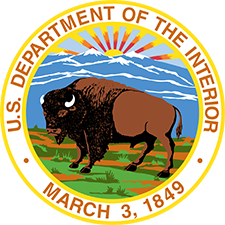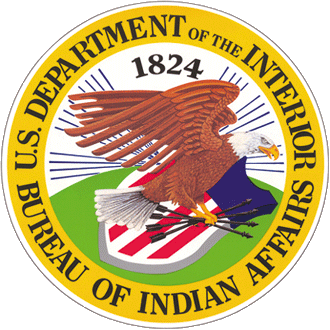The entire state of Alaska falls under the jurisdiction of the Alaska Region, with the small exception of the Annette Island Reserve, which falls under the Northwest Region. More than 180,000 Tribal members make up the 228 federally-recognized Tribes under the jurisdiction of the Alaska Regional Office—from Ketchikan in the Southeast Panhandle to Barrow on the Arctic Ocean and from Eagle on the Yukon Territory border to Atka in the Aleutian Chain. Alaska’s marine fish and wildlife habitats, species distributions, and food webs, all of which are important to Alaska Native villages, are increasingly affected by retreating and thinning arctic summer sea ice, increasing temperatures, and ocean acidification (NCA4, ch. 26). Many Alaska Native Villages are also dealing with impacts such as permafrost degradation, storm surge, erosion and flooding, and other similar issues which cause communities to face decisions around community-led relocation, partial relocation, site expansion, or take protect-in-place measures to address them.
Resources
- Alaska Regional Map (bia.gov)
- Alaska Tribal Resilience Learning Network (akcasc.org)
- Denali Commission (denali.gov)
- Engaging Rural and Alaska Native Undergraduates and Youth in Arctic STEM, report summarizing findings from a series of 2021 listening sessions on how to increase Alaska Native youth participation in Artic STEM programs.
- State of Alaska Agency Directory (alaska.gov)
- State of Alaska Division of Community and Regional Affairs (alaska.gov)
- Adapt Alaska (adaptalaksa.org)
Climate Adaptation Science Center (CASC) Regional Resources
- Alaska CASC (akcasc.org)
- Alaska CASC Host University (akcasc.org)
- Alaska CASC Projects (cascprojects.org)
- U.S. Geological Survey Alaska CASC (usgs.gov)
Alaska Climate Conferences
- Climate Adaptation Workshop | Alaska Wildlife Alliance (AWA) (akwildlife.org)
- Alaska Tribal Conference on Environmental Management (atcemak.com)
- Alaska Forum on the Environment | Alaska Forum (akforum.org)
- Upcoming Events – Alaska Center for Climate Assessment and Policy (uaf-accap.org)
- Alaska Sea Grant: Events (alaskaseagrant.org)
Planning Resources
- Planning & Land Management, Division of Community and Regional Affairs (alaska.gov)
- Home - ATCEM (atcemak.com)
Interactive Climate Data Maps
- Alaska's Environmentally Threatened Communities (arcgis.com)
- Statewide Threat Assessment Dashboard (arcgis.com)
Environmental Assessment (EA) Reports: Statewide
- Informational Report (bia.gov)
- Alaska Native Issues: Federal Agencies Could Enhance Support for Native Village Efforts to Address Environmental Threats (gao.gov)
- Statewide Threat Assessment: Identification of Threats from Erosion, Flooding, and Thawing Permafrost in Remote Alaska Communities (denali.gov)
Bureau of Indian Affairs
Connect with the BIA Branch of Tribal Community Resilience Regional Coordinator:
Jennifer Robinnette
Regional Coordinator
Email: jennifer.robinette@bia.gov
Phone: (907) 843-1290
Tribal Climate Resilience Liaison
The BIA Alaska region is served by the Alaska Climate Adaptation Science Center, partnering with the Native American Fish and Wildlife Society.
Lori Petrauski
Senior Liaison
Location: Fairbanks
Email: lpetrauski@nafws.org
Phone: (218) 966-1643Jolene Auliye
Assistant Liaison
JAuliye@nafws.orgJerilyn Kelley
Assistant Liaison
Location: Southwest Alaska
Email: JKelly@nafws.orgMalinda Chase
Supported by the University of Alaska, Fairbanks
Senior Liaison
Location: Fairbanks
Email: MjChase@alaska.edu
Phone: (907) 474-2768, (907) 460-8438
Contact Us
1001 Indian School Rd NW
Albuquerque, NM 87104


